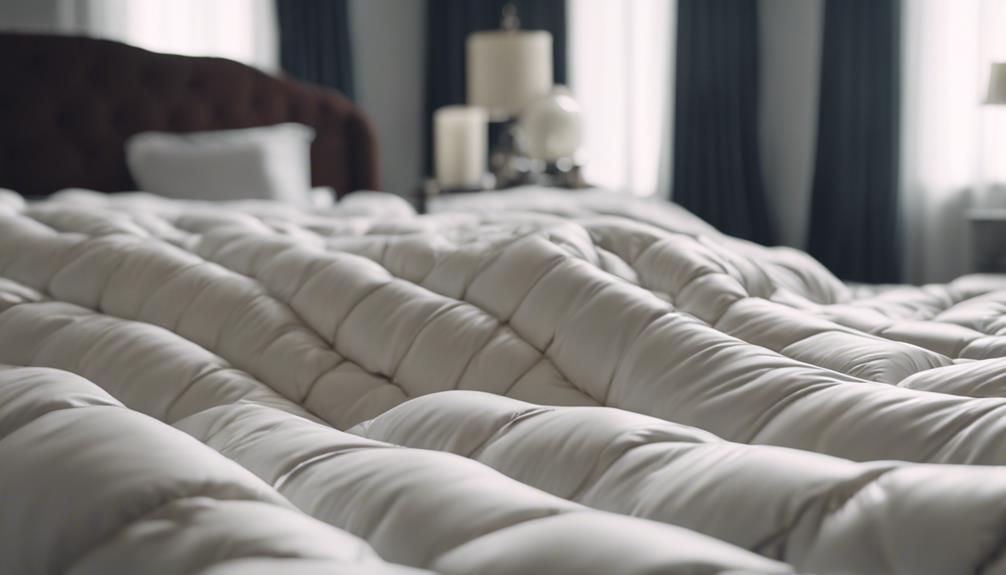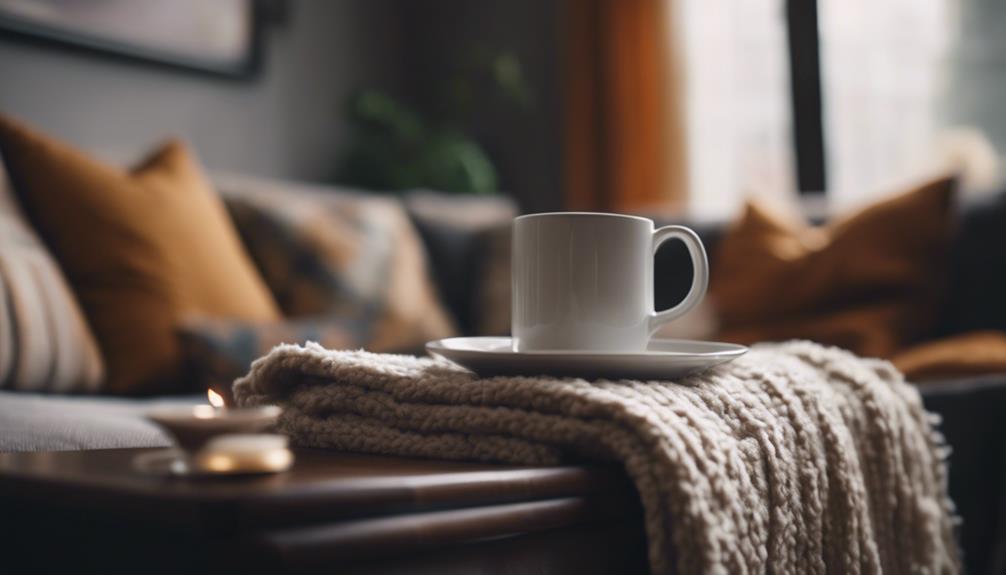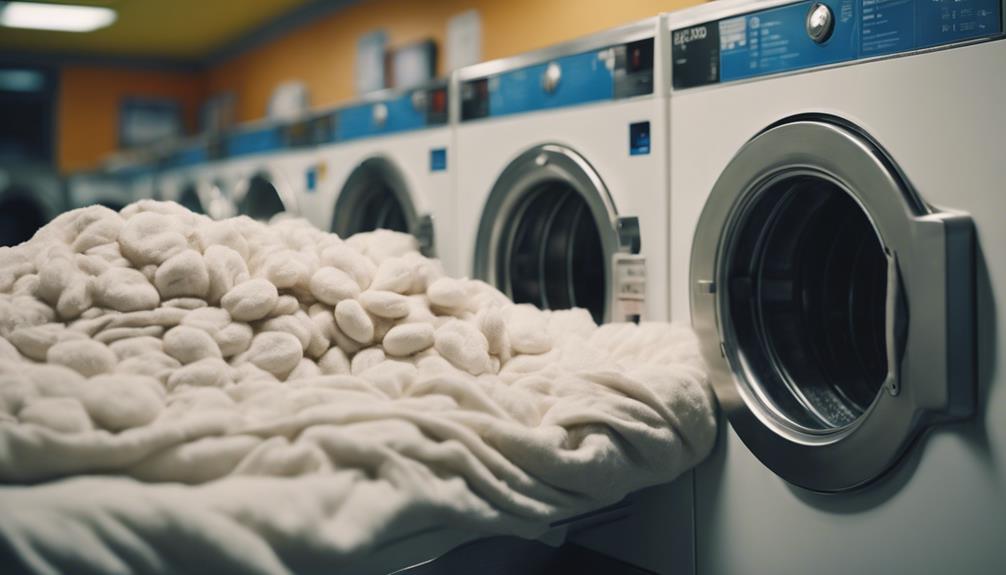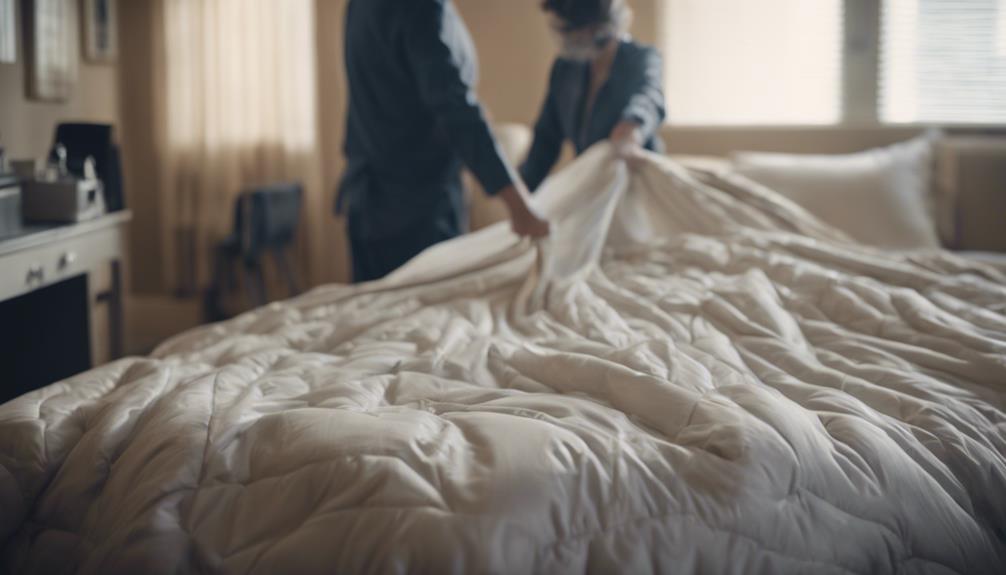When it comes to dry cleaning a king comforter, the cost typically ranges from $30 to $50. Various factors such as size, fabric type, and service location can influence the final price. Factors such as the condition of the comforter, modern cleaning equipment, and the cost of living in the area can also impact the pricing. Cost-saving tips include washing at home with specialized kits and seeking discounts through loyalty programs. Consider DIY options or professional services based on your convenience and desired outcome. Location can also play a significant role in pricing differences. Learn more about cost-effective cleaning methods and regional price variations.
Key Takeaways
- Cost range for dry cleaning a king comforter is $30 to $50.
- Factors like size, location, and service influence pricing.
- Fabric type and condition impact cleaning costs.
- Consider DIY options for cost-saving measures.
- Professional services offer convenience and high-quality results.
Dry Cleaning Process Overview

In dry cleaning, we use chemical solvents to clean a king comforter without water, which can affect the dry cleaning price. This process involves specialists following care tag instructions, inspecting for tears and stains, and performing spot cleaning as needed.
Dry cleaning a king comforter typically takes 3-4 hours, including washing, drying, and finishing to guarantee the best results. Factors such as the size of the comforter, the materials it's made from, and the location of the dry cleaner can influence the cost.
It's crucial to take these factors into account when determining the overall price for dry cleaning a king comforter. By understanding the dry cleaning process and the elements that impact the cost, you can make an informed decision when choosing a service provider for your king comforter cleaning needs.
Average Cost for King Comforter
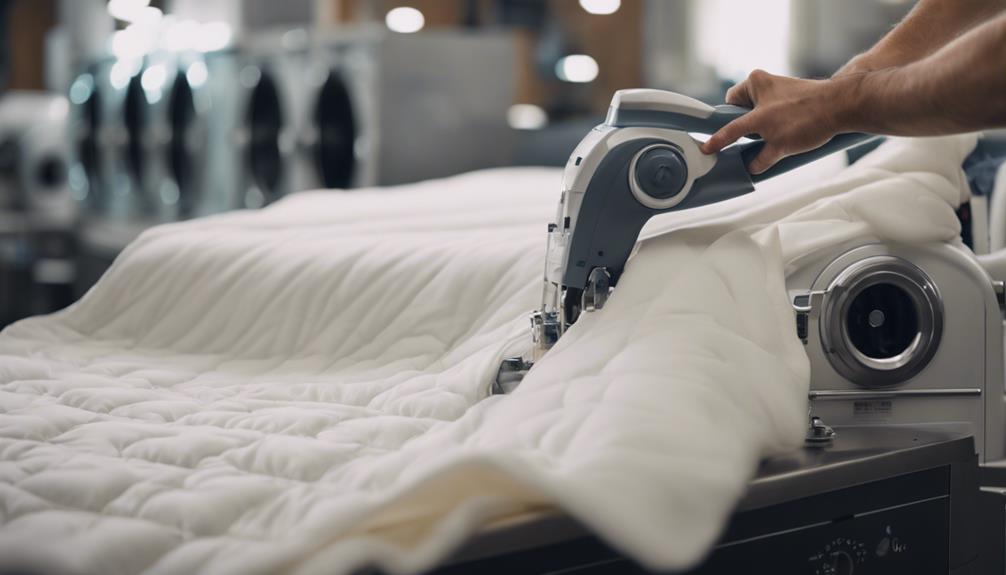
How much does it typically cost to dry clean a king size comforter? When considering the cost to dry clean a king comforter, the following points are essential to keep in mind:
- Cost Range: Dry cleaning a king size comforter typically ranges from $30 to $50.
- Factors at Play: The final price can be influenced by factors such as the size of the comforter, the materials it's made of, and any additional services requested.
- Size Matters: Due to the increased fabric and cleaning requirements, dry cleaning a king comforter may cost more than smaller sizes.
- Location and Service: Prices may vary based on the specific dry cleaning service utilized and the geographical location.
It's important to weigh the cost of dry cleaning a king comforter against alternative cleaning methods to determine the most cost-effective option for maintaining the cleanliness and longevity of your bedding.
Factors Influencing Cleaning Costs

Considering the various factors that can influence the cost, it becomes clear that the price range for dry cleaning a king size comforter is impacted by multiple variables.
The type of fabric plays an important role, as delicate materials may require special handling, affecting the overall cost. Additionally, the condition of the comforter, such as heavy stains or damage, can increase the price of cleaning.
The availability of modern machines and specific equipment also influences the cost, as more advanced technology may result in higher prices. Furthermore, the location of the dry cleaning service is significant, with high living standard areas often charging more for their services.
The city's cost of living is another factor to take into account, as it can impact the pricing structure for cleaning services. Understanding these factors is essential in gauging the potential cost range for washing machine dry cleaning of a king comforter.
Cost-Saving Tips for Cleaning
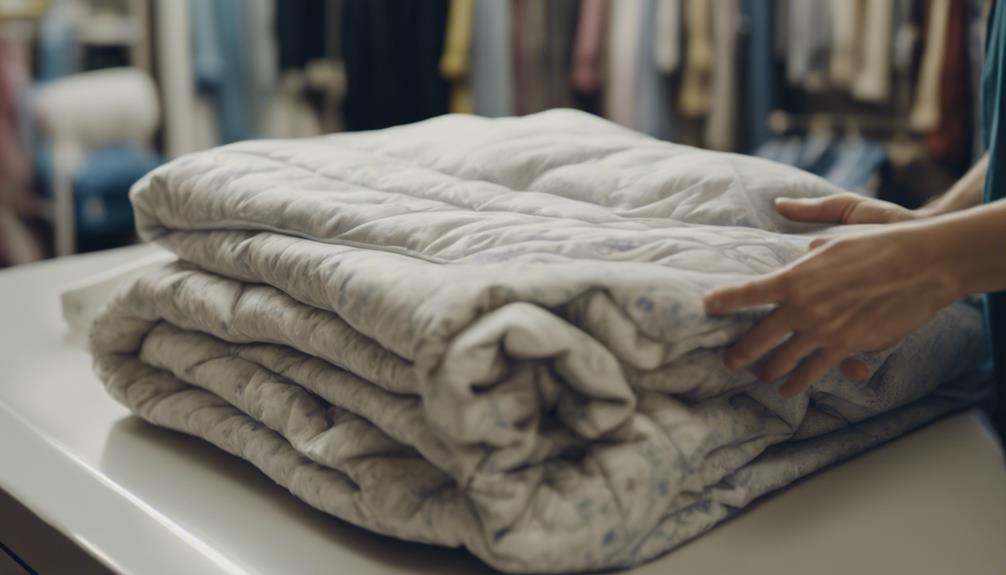
To save on cleaning costs, we recommend exploring various cost-saving tips that can help maintain the cleanliness of your king comforter without breaking the bank. Here are some practical suggestions:
- Consider washing the comforter at home with specialized kits: Some comforters can be safely cleaned at home using specific products designed for this purpose, saving you the expense of dry cleaners.
- Seek discounts through loyalty programs: Many dry cleaners offer discounts to regular customers or through membership services, providing opportunities to save on cleaning costs over time.
- Check product tags for alternative washing methods: Some comforters come with instructions for alternative washing methods that can help you avoid the need for expensive dry cleaning services.
- Opt for washable bedding: Choosing washable bedding options can eliminate the need for frequent trips to the dry cleaners, saving you money in the long run.
DIY Vs. Professional Services

When deciding between DIY and professional services for cleaning a king comforter, one must weigh the costs and benefits of each option carefully. DIY cleaning a king comforter can cost around $30-$50 for materials and equipment, which is comparable to the price range of professional dry cleaning services.
While DIY methods may save money, professional services offer convenience and expertise that can guarantee a thorough and effective cleaning process. Factors such as time, effort, and the desired outcome should be considered when choosing between DIY and professional cleaning.
DIY cleaning can be a cost-effective option for individuals willing to invest the time and effort required to properly clean a king comforter. However, those who prefer a more convenient and expertly handled approach may opt for professional dry cleaning services to guarantee a high-quality result without the hassle of doing it themselves.
Location Impact on Pricing

In different regions, the cost of dry cleaning a king comforter can vary considerably due to factors like urban versus rural costs.
When considering dry cleaning services, it's important to take into account the location's cost of living to anticipate pricing differences.
Opting for a dry cleaner in a rural area may lead to more budget-friendly rates compared to those in urban settings.
Regional Price Variations
Regional price variations play a significant role in determining the cost of dry cleaning a king size comforter, with location serving as a key factor influencing pricing. When considering regional price variations for dry cleaning a king comforter, it's essential to read the care instructions thoroughly to understand any special requirements.
Here are a few key points to note about regional price differences:
- Cost of Living: Areas with a higher cost of living tend to have more expensive dry cleaning services.
- Competitive Market: Prices can vary based on the level of competition among dry cleaners in the region.
- Urban vs. Rural: Urban areas generally have higher prices compared to rural locations.
- Supply and Demand: Regions with a higher demand for dry cleaning services may have slightly higher prices.
Urban Vs. Rural Costs
Comparing urban and rural costs for dry cleaning a king comforter reveals significant price differences influenced by location. In urban areas, the cost can range from $30 to $50 due to higher living standards and operating costs.
Conversely, rural areas typically offer lower prices, ranging between $20 and $40 for cleaning a king size comforter. The disparity in pricing is primarily attributed to the varying overhead expenses faced by dry cleaning businesses in different locations.
Urban dry cleaners often contend with higher rent and utility costs, leading to increased prices for services like king comforter cleaning. On the other hand, rural dry cleaners benefit from lower operating expenses, enabling them to provide more competitive rates for dry cleaning a king comforter.
Frequently Asked Questions
Is It Worth Dry Cleaning a Comforter?
Dry cleaning a comforter can be worth it depending on factors like material and care instructions. Assess the condition of your comforter and weigh the benefits of dry cleaning against the cost.
For larger items like king comforters, the price range of $30-$50 for dry cleaning may be reasonable for preserving quality. However, explore alternative washing methods like machine washing or at-home cleaning to save money while maintaining cleanliness.
How Much Does It Cost to Dry Clean a King Down Comforter?
Dry cleaning a king down comforter typically costs between $35 to $50. The price varies depending on factors like size, fabric, and any special services needed. Factors such as the comforter's condition and the dry cleaner's location can also influence the final cost.
Larger or delicate fabric comforters may incur higher fees. Additional charges may apply for repairs or special treatments required during the cleaning process.
Is It Better to Wash or Dry Clean a Down Comforter?
Washing a down comforter at home can risk damaging the delicate feathers. Dry cleaning is often the better choice to maintain the comforter's quality and extend its lifespan.
The gentle cleaning process of dry cleaning helps protect the down filling, removing dirt, oils, and odors effectively. Following the care instructions on the comforter's label is essential.
Dry cleaning can be a safer option for down comforters, ensuring thorough cleaning without harming the feathers.
How to Clean a King Size Comforter?
When cleaning a king size comforter, start by checking the care label for specific instructions. Use a large capacity washing machine if it fits, or head to a laundromat for industrial-sized machines.
Opt for a gentle cycle with mild detergent to avoid damaging the fabric. After washing, tumble dry on low heat or air-dry for best results.
Regularly cleaning your comforter helps maintain its quality and freshness.
Is there a price difference in dry cleaning regular vs down comforters?
When it comes to dry cleaning, there may be a price difference between regular and down comforters. Due to the delicate nature of the material and the specialized cleaning process required, a dry clean king down comforter might cost more to clean compared to a regular comforter.
Conclusion
To wrap things up, getting your king comforter dry cleaned can cost a fortune, leaving you feeling like you need to take out a second mortgage. Don't be surprised if the bill makes your eyes pop out of your head!
It's definitely not a budget-friendly option, so make sure to explore cost-saving alternatives before diving into the dry cleaning world. Remember, a little research and planning can go a long way in saving you some serious cash.
